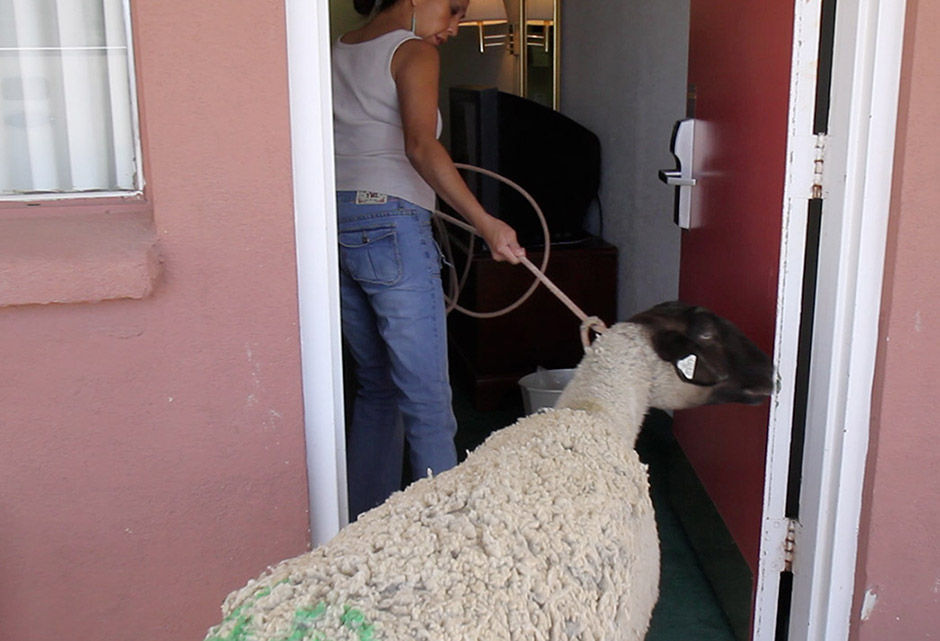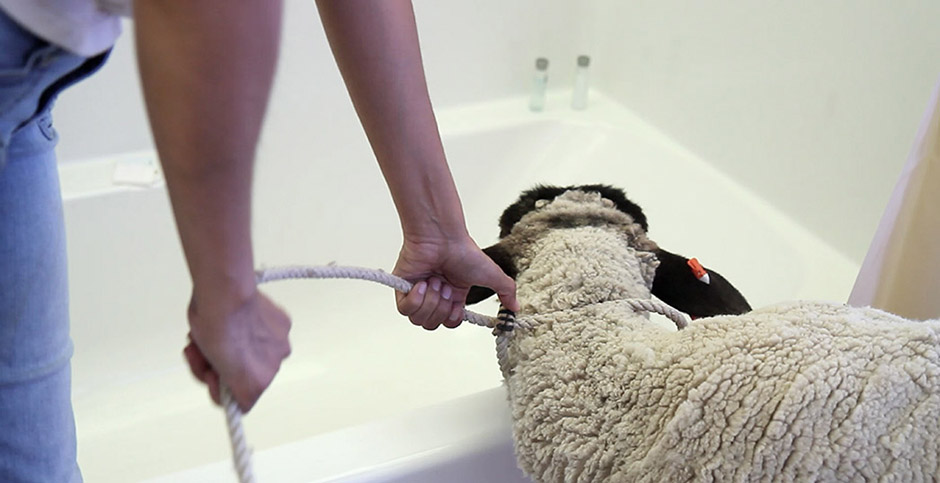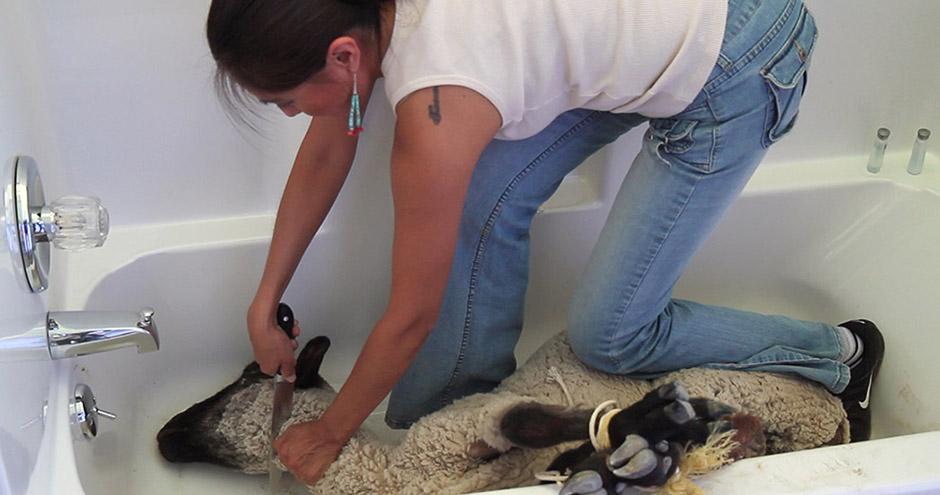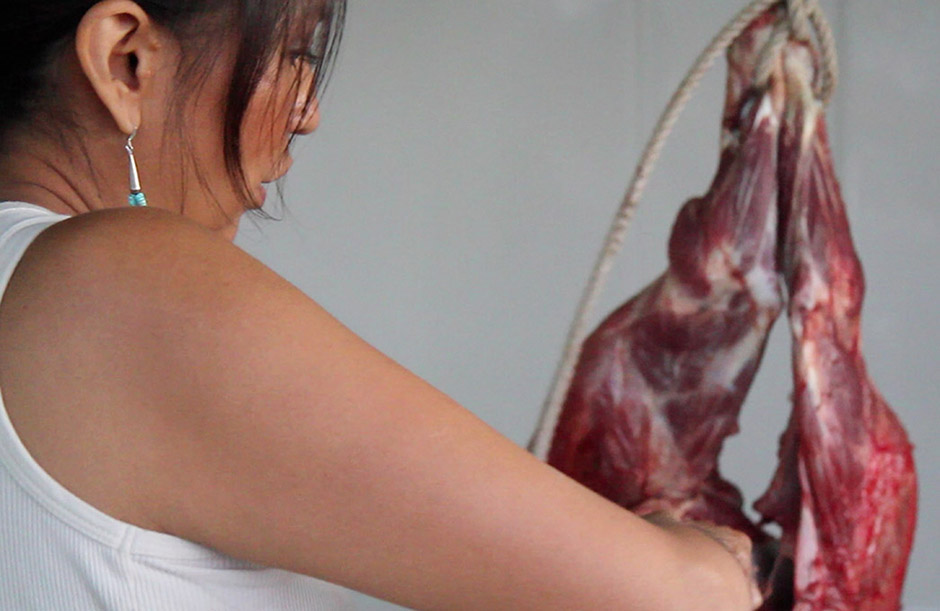![]()




Gallup Motel Butchering - 2011.
Multi-channel video. Duration: 9:05.
Video Stills.
The contested space of the colonized landscape of America is often defined by theoretical terms of art that gratify the evolving aspirations of the Western imagination. While the non-place of supermodernity (described by Augé) may exist for recent visitors and occupiers without a cultural, social, and psychological connection to this land; it is not part of the lexicon of American Indigenous peoples. In spite of the commerce, velocity and complexity brought about by the market, Indigenous peoples continue to perceive and engage the land and its resources in a manner deemed to be culturally sensible -- regardless of market induced forces of mediation, or how these mediating forces might be appropriated. In this regard, a motel constructed on the traditional homelands of the Navajo people for tourists to temporarily gaze at the historicized simulation of an imagined past does not necessarily render it a non-place for Indigenous People. It also functions as a temporary space for a Navajo woman to butcher a sheep and prepare meat for a family feast. It is a place where a cultural process may seem irrational or violent in theoretical terms; but in pragmatic Indigenous terms, it is a place to perform a transposition of past and present, and to acknowledge the interconnectedness of land, culture and community. This four channel video installation examines the contested space of tribal homeland, tradition, globalism, commerce, cultural continuity and intersubjective gaze. The installation’s gritty hyper-real depiction of the butchering event (shot with multiple HD cameras with numerous perspectives and frame rates) reveals how a traditional act of cultural self-determination can appear violent and disorientating within the context of a “non-place” and pose a poetic, metaphorical transgression against the assumptions of the Western imagination.